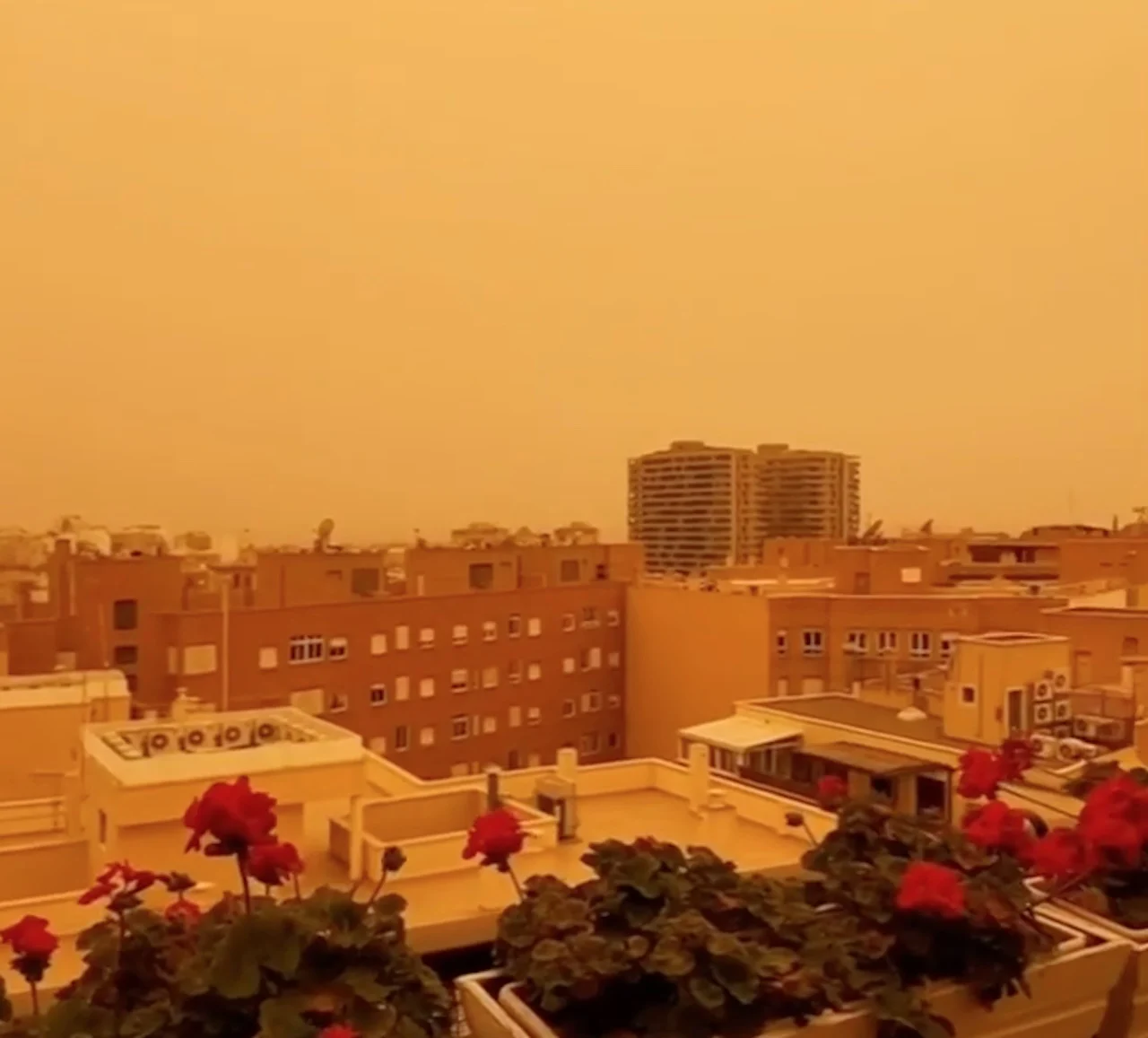
Sandstorm colours Spain skies with health-threatening Sahara dust
A potent sandstorm has covered the skies in parts of Spain with a layer of Sahara dust, prompting local officials to urge residents to stay indoors or wear face masks if going outside as a result of the poor air quality.
Residents in Spain are being urged to stay indoors after a blanket of dust from the Sahara Desert swept into parts of the country from a significant sandstorm.
As a result of the dust, Madrid had the worst air quality in the world at one point Tuesday, but it has since improved, according to IQAir. It had a index rating of 191, but has since decreased a fair bit and the city is now out of the top 10 worst locations.
Visit our Complete Guide to Spring 2022 for an in-depth look at the Spring Forecast, tips to plan for it and much more!
The dust storm has been described by the country's weather service as “extraordinary and very intense."
"Air quality at some points over Spain was the equivalent of smoking two packs of cigarettes in a 24-hour period. We saw air quality like that in British Columbia's wildfire seasons," said Tyler Hamilton, a meteorologist at The Weather Network.

Known as the Saharan Air Layer (SAL), the dust is blown regularly across the Atlantic -- from Africa to the Caribbean and North America. The desert from which it originates sprawls across 9.2 million square kilometres – a little smaller than Canada – and some 60 million tonnes of the stuff is lifted into the atmosphere each year.
MANY WOKE UP TO SANDY-TINGED SKIES
So, what's behind this setup? A stalled low-pressure system across northern Africa and an adjacent ridge of high-pressure are conduits to funnelling dusty air north, with Europe caught in the middle.
"Nowhere for that dust to go except Spain, caught in the crosshairs of that dust," said Hamilton.
Residents in Madrid woke up from their slumber Tuesday to find a layer of red dust sprinkled on residences, streets and cars. They also had looked up to the sight of a sandy-tinged sky, reported in other cities, too.

(NASA's Earth Observing System Data and Information System (EOSDIS)
According to Spain's weather bureau, visibility in locales such as Madrid, Granada and Leon was reduced to just four kilometres. The dust is expected to continue to assemble through Wednesday, possibly then extending north as far as the Netherlands and northwestern Germany.
Areas north of Madrid also experienced a sharp drop in air quality, reaching as far west as the Canary Islands in the Atlantic Ocean, where dust events are more common. The Balearic Islands in the Mediterranean also experienced a plummet in air quality, as well.
Officials have cautioned citizens to use face masks if they go outside, but avoid exercise.
WATCH: SOUTHERN SPAIN SEES HAZY SKIES AS SAHARA DUST STORM BLOWS IN
DUST EXPOSURE CAN LEAD TO DEATHS, RESPIRATORY, EYE PROBLEMS
Mounting evidence, including a study published in the National Library of Medicine, has indicated that mineral dust found in particulate matter may contribute to serious health impacts including an increase in deaths. Approximately half of atmospheric mineral dust originates from the Sahara Desert.
As well, those with respiratory ailments such as asthma and sinusitis could be impacted, as irritation of the eyes, nose and throat are possible impacts from the dust exposure.
Thumbnail courtesy of @Nazari_Granada | Storyful.
Contains files from Daniel Martins, product specialist at The Weather Network.
Follow Nathan Howes on Twitter.
